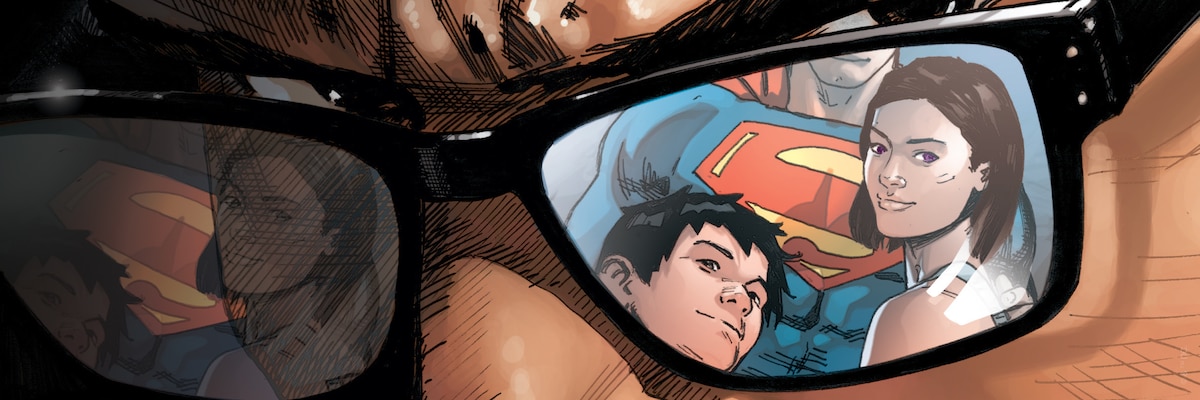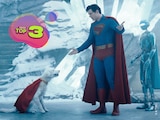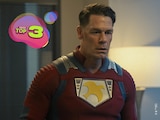“Now that I stop to think about it…that’s the dumbest disguise I’ve ever seen! What am I supposed to look like? A totally different person?” – Clark Kent, 1978’s Superman #330
This is what Superman himself has to say about the fact that his “disguise” as Clark Kent consists almost exclusively of a pair of eyeglasses. Is the Man of Steel being too hard on himself, or is he calling out the obvious truth?
If you’ve seen James Gunn’s Superman, you might have some questions about the hypno-glasses explanation given by Guy Gardner. Yes, that’s actually from the comics, and it was pretty controversial at the time. However, it’s just one of many ways the glasses issue has been addressed.

When you talk about Clark Kent using glasses as a disguise, it’s important to put it in the context of when he was created. The world of 1938 was very different than the world we live in today. There was no internet, and while television was around, very few homes had it. Newspapers and radio were the primary forms of mass media.
In other words, Superman largely operated as an urban myth during his early adventures. If newspaper photographs of him existed, they would’ve been low resolution and probably wouldn’t have been a close-up. Unless you personally encountered the Man of Steel, you most likely had no idea of what he looked like.
In short, it was a lot easier to sell the notion of someone like Superman hiding his identity in a world without TikTok and 24-hour news media. However, this doesn’t cover people like Lois Lane who regularly interact with both Clark Kent and Superman. For this, it’s important to keep in mind that the Clark Kent disguise is actually more than just a pair of glasses.
During the Golden and Silver Age, Clark Kent had a more timid and cowardly persona. Clark’s cowardice was exaggerated to a cartoonish degree, to the point where Lois detested his very presence. This has been toned down over the years and many modern stories and reinterpretations leave it out entirely, but Clark’s disguise was more than visual. It was mental conditioning designed to make his coworkers perceive him as the opposite of Superman.
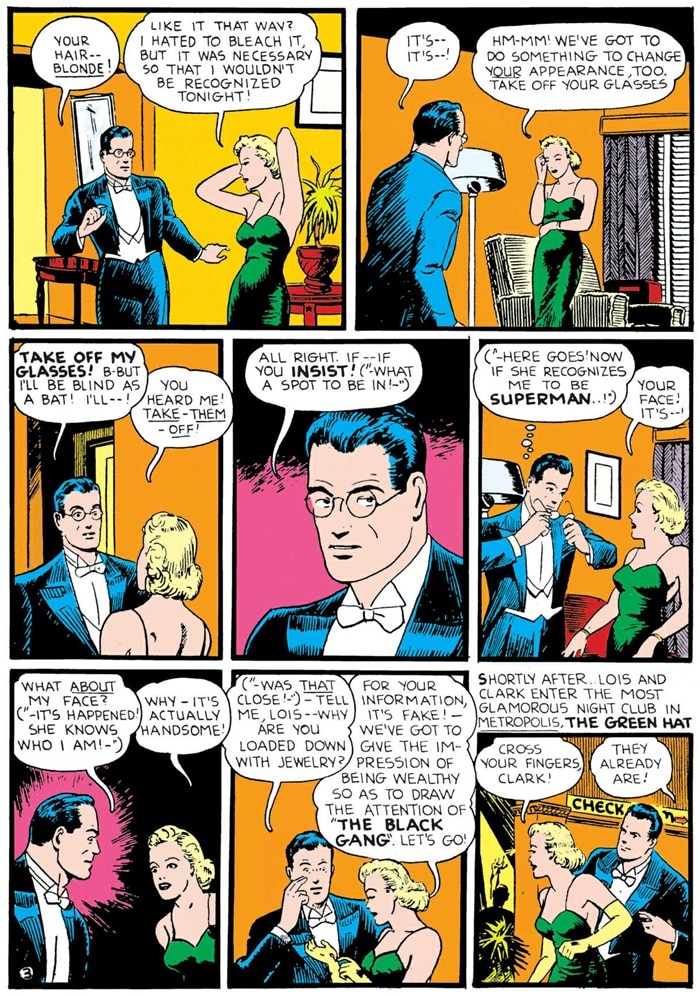
In 1940’s Superman #7, Lois demands that Clark remove his glasses for an undercover assignment and Clark is worried that she’ll recognize him as Superman. To his relief and surprise, Lois notes that he’s handsome without his glasses and doesn’t appear to notice any resemblance to the Man of Steel. It’s a prime example of Superman’s “cowardly Clark” persona throwing her off.
Of course, Lois is a good reporter and the disguise can only go so far, so it isn’t long before she begins piecing things together. In 1942’s Superman #17, Lois remarks, “On more than one occasion, I’ve noted a faint resemblance between the features of Clark Kent and Superman.” Only a faint resemblance Lois?
The issue was once again addressed in 1966’s Superman’s Girlfriend Lois Lane #63. The cover has Superman stripping off his Clark Kent disguise to reveal his Superman costume to Lois Lane and Lana Lang. The cover also features a caption promising the explain how Superman’s glasses can fool the world.
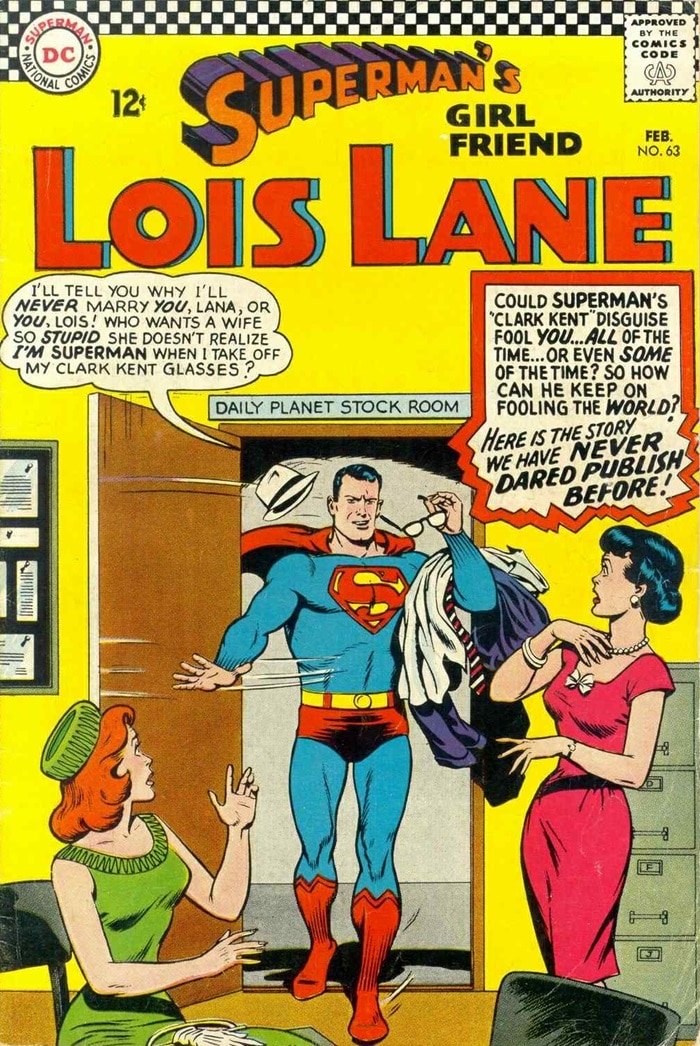
This was false advertising.
The actual issue is about Lois infiltrating a criminal organization called SKUL. The moment seen on the cover takes up two panels near the end of the story. We then learn that this isn’t really Superman, but an FBI agent named Van Benson who disguised himself as Superman for…reasons.
This was hardly the promised explanation regarding Superman’s glasses, but that would eventually come twelve years later with 1978’s Superman #330—the infamous hypno-glasses issue. The issue was written by Martin Paso and inspired by a fan letter from Al Schroeder III. During the story, Clark learns that he’s been unknowingly using his powers to hypnotize his friends. He’s able to do this because the glass used for his spectacles came from the rocket that brought him to Earth from Krypton.
Thanks to the glasses, Superman was able to subconsciously project an image of Clark that looked frailer than Superman. Of course, this raises a lot of follow-up questions, which the comic did its best to answer. Clark reasons that the hypnosis doesn’t work on himself, which is why he sees himself normally in the mirror. Clark also concludes that cameras amplify the hypnosis, which is why it still works when he’s seen in pictures and videos. Oh, and the hypnosis has a lingering effect, which is why it still worked during various periods where he lost his powers.
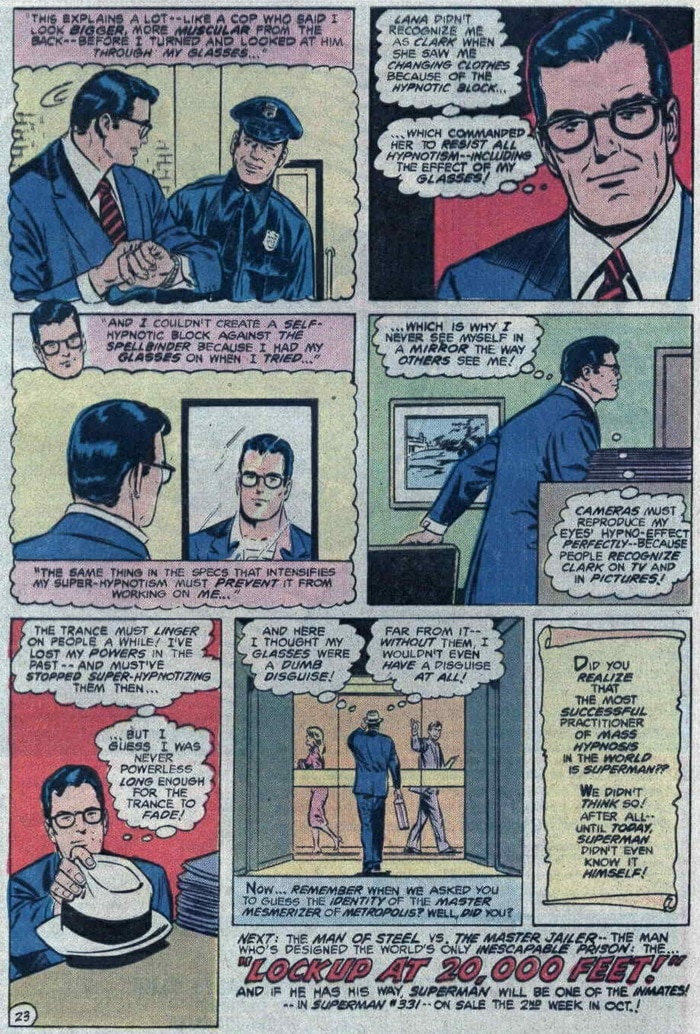
“And here I thought my glasses were a dumb disguise!” Clark muses. “Far from it—without them, I wouldn’t have a disguise at all.”
The whole thing was controversial and was never brought up again. A multiverse index from Crisis on Infinite Earths: Absolute Edition excised the issue from Pre-Crisis continuity by placing it on Earth-32. This universe is the resting place for some of DC’s more experimental Pre-Crisis stories.
That same year, Superman: The Movie was released in theaters and Christopher Reeve reminded us of how effective the Clark Kent disguise can be. While playing Clark, Reeve would hunch his shoulders, change his body language and put on a different voice. He seemed to transform into an entirely different person.
When John Byrne modernized Superman for the Post-Crisis era, he found a few ways to address the Man of Steel’s secret identity. In 1986’s The Man of Steel #1, Clark works with his human parents to help develop his Clark Kent disguise.
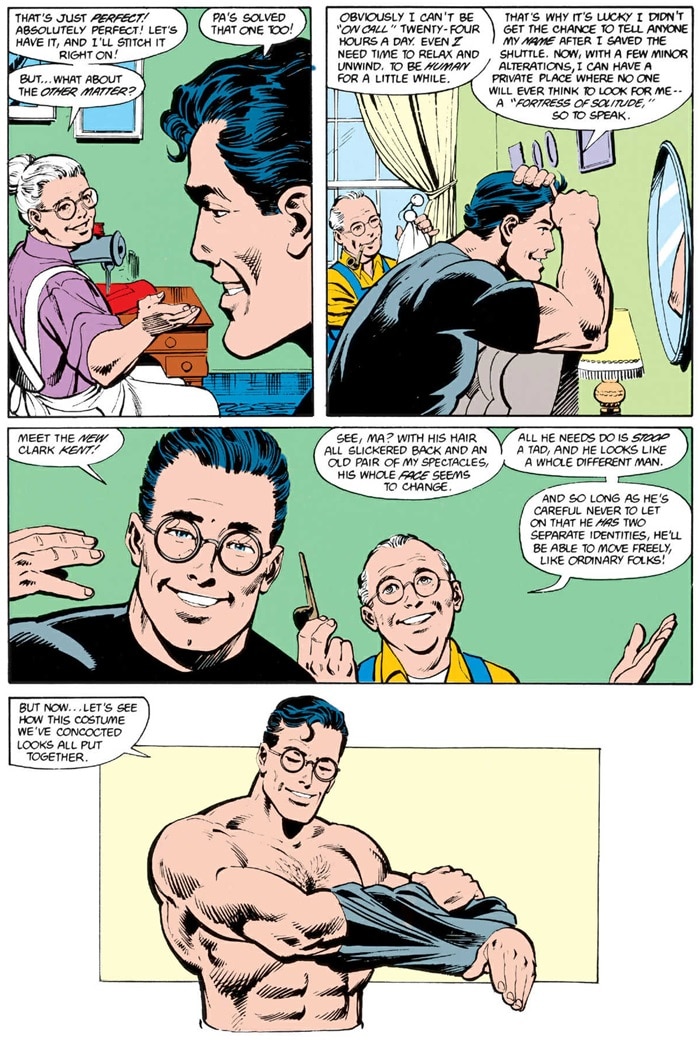
“With his hair all slickered back and an old pair of my spectacles, his whole face seems to change,” Jonathan Kent says. “All he needs do is stoop a tad, and he looks like a whole different man.”
Byrne also suggested the citizens of the DC Universe simply assume that Superman was Superman 24/7. Unlike Batman or the Flash, he doesn’t wear a mask, so why would anyone assume he had a secret identity? Supporting this, in 1986’s Superman #2, Lex is presented with evidence that Clark Kent is really Superman, but he rejects it because he can’t fathom why a being so powerful would feel the need to spend half his life masquerading as a normal person.
We’ve covered a lot of explanations for Superman’s overly simple disguise, but we haven’t addressed the main one—suspension of disbelief. When we read comics, we buy into concepts that we would never believe in the real world. We can accept an alien squirrel with a powerful Green Lantern ring. We can accept magic, teleportation, demons and all kinds of fantastical stuff.
So, is it really much of a stretch to suspend our disbelief and accept that nobody recognizes Superman when he puts on his glasses?

When it came time to reinvent the Man of Steel for DC Studios’ Superman, Gunn could’ve gone with suspension of disbelief, but instead he decided to dust off a rejected piece of Superman lore from 1978. It wasn’t necessary, but honestly, it’s kind of awesome. By choosing to reference the hypno-glasses, James Gunn and David Corenswet are demonstrating that they’re not afraid of addressing some of the sillier aspects of Superman lore. Far from it, they’re going to downright embrace it.
If you ask me, that’s the real punk rock.
Superman, directed by James Gunn and starring David Corenswet, Rachel Brosnahan and Nicholas Hoult, is now in theaters! Click here to get tickets.
Joshua Lapin-Bertone writes about TV, movies and comics for DC.com, is a regular contributor to the Couch Club and writes our monthly Batman column, "Gotham Gazette." Follow him on Bluesky at @joshualapinbertone and on X at @TBUJosh.
NOTE: The views and opinions expressed in this feature are solely those of Joshua Lapin-Bertone and do not necessarily reflect those of DC or Warner Bros. Discovery, nor should they be read as confirmation or denial of future DC plans.
